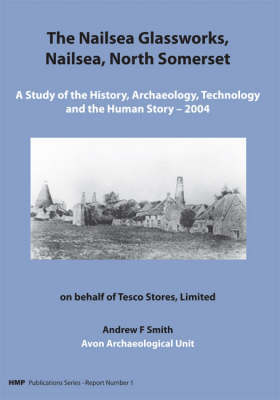The Nailsea Glassworks, 1788-1874, was in its time regarded as one of the most significant glassworks in the UK. The site then went through a long period of dereliction and piecemeal redevelopment. Informal archaeology started in 1975, becoming serious from 1983 onwards in response to various development proposals. Ultimately that by Tesco Stores, Limited, who have generously sponsored this Study by Avon Archaeological Unit, came to fruition. Andrew Young, head of the Unit asked the present writer to undertake the project. The remainder of the site has now been scheduled. The Study is in five principal parts (including the Introduction) and it is intended that, while making up a cohesive whole, each may be considered in its own right. The Introduction covers some general points not specifically addressed in the subsequent parts. Part 1 is a Desk-top Study. Briefly, for those not familiar with the term, it consists of examining historical records, considering the landscape in which the site is set and any known or inferred archaeology in the vicinity.
This should result in a document that will focus the attention of the responsible parties involved in order to establish what, if any, archaeological intervention is desirable, and, if it is judged necessary, its extent. It forms a useful background to the remaining parts. It is disturbing that it had not been required very much earlier. Part 2 examines the archaeological interventions chronologically. In order to add value, admittedly with the benefit of hindsight, this has been done critically, as certain errors were detected. It was felt that these should be commented on in order that the evidence might hopefully be more meaningful overall. Part 3 looks at the technology, starting with a brief look at the history of glass, gradually narrowing the focus down with time, finally considering what was done, as far as is known or can be extrapolated, at Nailsea itself. It is hoped that this section will not only be intelligible to the general reader, but will also be of value to the specialist.
Part 4 takes a brief look at the social and economic effects of the introduction of what was a modern manufacturing facility in to a largely rural community, and how it fitted in to the wider economic picture. Its demise is also considered. Some widely-held assumptions are challenged. There are still unanswered questions, about the technology in particular, which have arisen from the archaeology, no parallels having been found. It is hoped that some answers may come from the wider dissemination of the study. These and any other observations will be welcomed. The author is most grateful to Dr. David Martlew for his enthusiastic support in facilitating this. It is hoped that the study will have achieved its purpose to illuminate as much as possible what has been done in, by and to the Nailsea Glassworks.
- ISBN10 190522320X
- ISBN13 9781905223206
- Publish Date 30 June 2012
- Publish Status Out of Print
- Out of Print 18 March 2021
- Publish Country GB
- Imprint Heritage Marketing & Publications Ltd
- Format Paperback
- Pages 284
- Language English
